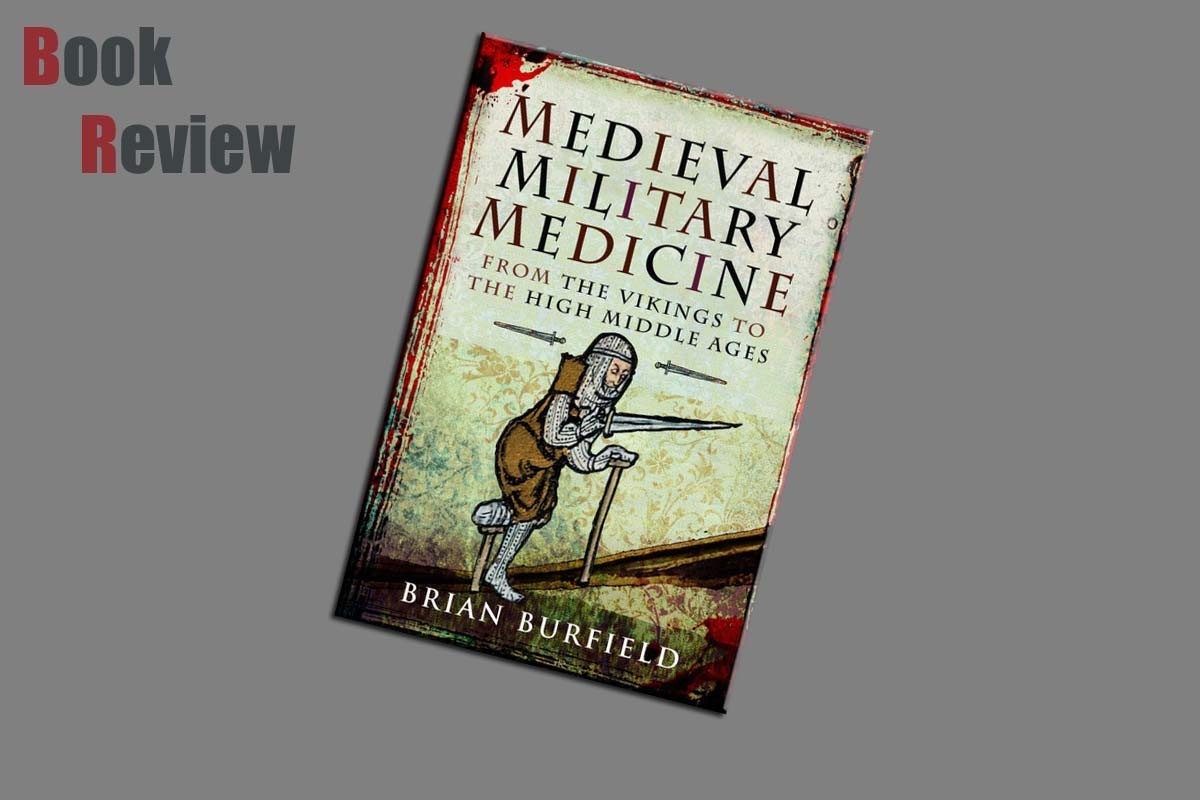
Introduction
The following introduction is as supplied by Pen and Sword:
Soldiers of the Middle Ages faced razor-sharp swords and axes that could slice through flesh with gruesome ease, while spears and arrows were made to puncture both armour and the wearer, and even more sinister means of causing harm produced burns and crush injuries. These casualties of war during the 500-year period between the ninth and thirteenth centuries in Northern and Western Europe are the focus of Brian Burfield’s study, but they represent just a portion of the story – disease, disability, disfigurement, damaged minds all played their roles in this awful reality.
Surgical methods are described in the book, as are the fixes for fractured skulls, broken bones and damaged teeth. Disfiguring scars and disabling injuries are examined alongside the contemporary attitudes towards them. Also investigated are illnesses like dysentery and St Anthony’s Fire, plus infected wounds which were often more deadly than the weapons of the age. A final chapter on the psychological trauma caused by war is included and contains a significant focus on the world of the Vikings.
Brian Burfield’s account features many individual cases, extracting their stories of wounds, sickness and death from chronicles, miracle collections, surgeries, government records and other documents. The prose, poetry and literature of the period are also of great value in bringing these cases to life, as is the evidence provided by modern archaeological and historical scholarship.
Review
This offering from Pen and Sword is a hard backed book authored by Brian Burfield. The information in this title is covered over 224 pages and 8 chapters. The text is easily read but difficulty may occur where old English terms and French are used before being presented in English we would understand. Reading through the book I did not find any obvious issues with the text or grammar in the title that does present an interesting look at medicine and surgery of the time and how it affected both armies and civilians alike in many cases. The books contents are presented in the chapters laid out below.
Chapter 1 – Leechbooks and Surgeries
Chapter 2 – Chronicles, Songs and Saints
Chapter 3 – Soldiers, Smiths and Safety
Chapter 4 – Wounds and Surgery
Chapter 5 – Broken Bones and Fractured Skulls
Chapter 6 – Disfigured and Disabled
Chapter 7 – Illness and Infections
Chapter 8 – Tormented Minds
I have worked in modern operating theatres and seen some of the injuries mentioned in this title, and so I have an inkling of how such conditions are treated today. By far it is the advent of antibiotics that have had the biggest impact on the survivability of injuries and allowed certain surgeries to be carried out. This title looking at medicine from the Vikings to the high Middle Ages covers a period where infection was the biggest killer if you survived the initial condition.
The title covers a wide number of conditions from battle wounds to sexually transmitted disease and the methods employed to try and make you well enough to carry on the next campaign. An interesting aspect of the start of this title is how medicine spread around the world via an unusual route; slavery. When the Vikings began their attacks on the British Isles, religious buildings were a popular target due to the large amount of wealth they held. The Vikings also took slaves and nuns and clerics were often the healers of the day for the most part. The result is knowledge these people had being spread along the slave routes and of course the Middle East was a rich area of knowledge at this time whose people’s travelled the other way.
I learnt a lot from this title about the time as regards healers, I did not for instance know that blacksmiths were classed as healers; in this case it would seem mostly via a placebo effect. People would go to the blacksmith and lay the injured part of their anatomy on the anvil and the blacksmith would bring down a hammer making sure you hope to miss the area and many swore they were cured. A documented case tells of a knight reduced to a foot soldier due to what is suspected to be an Inguinal Hernia. He is said to have dreamed of a Saint telling him to get a blacksmith to hit the affected area with his biggest hammer (I am thinking I’ll stick to being a foot soldier). The soldier placed his groin on the anvil and as the blacksmi9th came towards him with what I assume would be a sledge hammer he fell backwards in fear and was miraculously cured.
Conclusion
This is an enjoyable read that both informs and frightens with equal measure. The injuries that were treated are not as commonly suffered today but a severe laceration is often tackled in a similar way to how it was in the past with the added advantage of antibiotics. The sections looking at broken bones, bowel injuries and disease are particular interesting. Broken bones being exposed and copper sheet wrapped around the bone and left there for the bone to heal, skeletons found show this treatment worked. The extent of bowel injuries being checked by getting the injured person to eat a strong smelling foodstuff to check for perforations to the bowel and so in most cases not worth attempting treatment. Well worth your investment



























